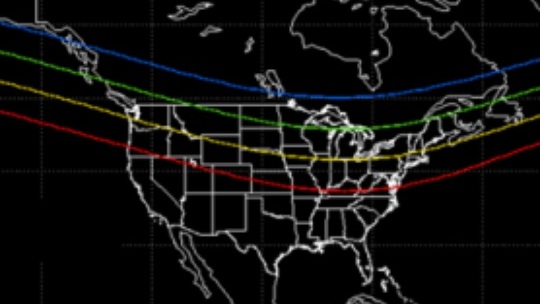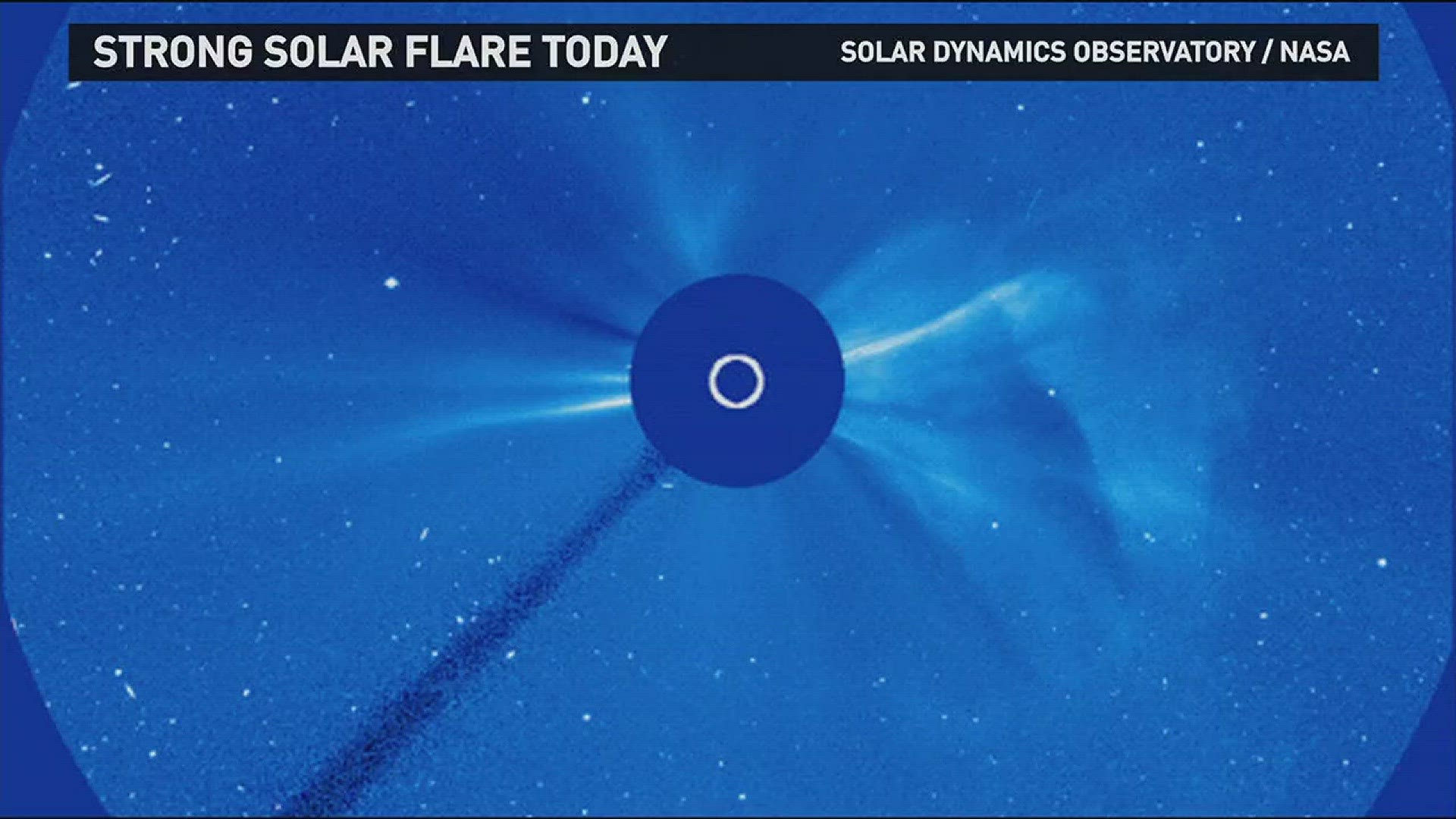Thanks to a geomagnetic storm from the sun, skywatchers across most of Canada and the northern U.S. should get a special treat Sunday night into Monday morning: A visit from the aurora borealis, aka the Northern Lights.
The sky spectacle should be visible in states such as Montana, the Dakotas, Minnesota, Wisconsin, northern Illinois, Michigan, northern New York State and much of New England, according to NOAA's Space Weather Prediction Center.
Folks in cities such as Minneapolis, Chicago, Detroit, Buffalo, Syracuse, Albany and Boston all have a fair chance of seeing the aurora.
KGW chief meteorologist Matt Zaffino said while chances are slim, there is the possibility some in northeast Oregon may get a glimpse of the Northern Lights.
"Look to the north, around of after midnight, and try to get away from the glare of city lights" Zaffino advised.
Area of solar activity (sunspots) we posted on earlier this week emitted a strong solar flare last night. Minor radio impacts Asia/Pacific. pic.twitter.com/H3QwGArCHw
— NWS Eastern Region (@NWSEastern) July 14, 2017
The event is courtesy of a solar flare, which erupted out of a sunspot late Thursday into early Friday. The flare blasted out X-rays, which caused a minor radio blackout over parts of Asia, the Weather Network reported.
The flare also released a wave of charged particles, known as a coronal mass ejection, which take a couple of days to reach Earth.
Charged particles (coronal mass ejection) from the solar flare will reach the earth Sun. Auroras possible Sun night New England-Great Lakes pic.twitter.com/Nq03C2gFN8
— NWS Eastern Region (@NWSEastern) July 14, 2017
The aurora forms when those particles flowing from the sun get caught up in the Earth's magnetic field. The particles interact with molecules of atmospheric gases to cause the famed glowing red and green colors of the aurora.
The lights are visible in both the far northern and southern parts of the world. The southern lights are known as aurora australis.
NOAA has issued a geomagnetic storm watch for the event and expects a "moderate" storm, a 2 out of 5 on its severity scale.


